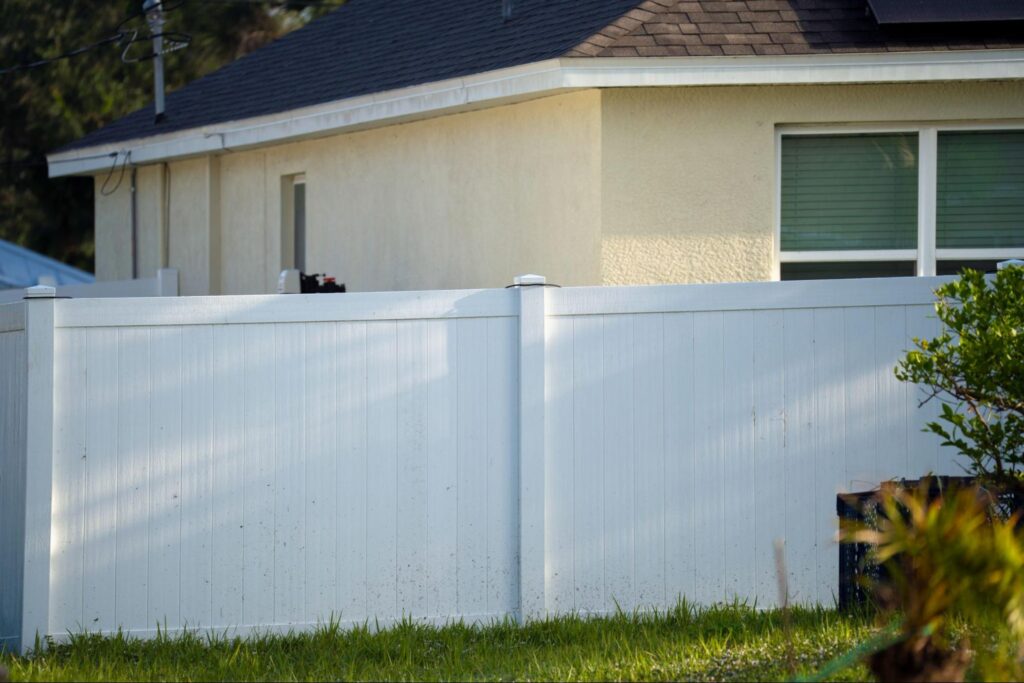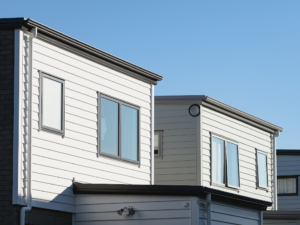A privacy fence creates a sense of security and seclusion in any outdoor space. It blocks unwanted views, reduces noise, and adds value to a property. However, finding an affordable option that meets functional and aesthetic needs can be challenging. Homeowners often seek a balance between cost, durability, and maintenance. Understanding the most budget-friendly choices helps make an informed decision without unnecessary expenses.
The Most Affordable Types of Privacy Fences
Not all privacy fences are expensive. Several materials offer security and seclusion without stretching the budget. Some options may require additional upkeep, while others provide long-term durability with minimal maintenance. Exploring these affordable choices helps homeowners find the best fit for their needs:
Wooden Privacy Fences
Wood remains one of the most popular fencing materials due to its affordability and classic appearance. Pressure-treated pine and spruce are among the cheapest options, though they require routine maintenance. Staining or sealing the wood helps extend its lifespan by protecting it from moisture and pests. While cedar costs more upfront, it naturally resists decay and requires less upkeep. Despite its maintenance needs, a wooden privacy fence offers an effective balance of cost and aesthetics.
Chain-Link Fences With Privacy Slats
Chain-link fencing is one of the most budget-friendly options available, but it lacks privacy. Adding privacy slats made of vinyl or polyethylene transforms it into a more secluded barrier. These slats come in various colors and provide an affordable way to enhance coverage. A vinyl-coated chain-link fence also improves durability by resisting rust and corrosion. Since installation is straightforward, it reduces labor costs, making it a practical option for those on a tight budget.
Vinyl Fencing on a Budget
While vinyl fencing is often associated with higher costs, budget-friendly variations exist. Hollow PVC panels provide privacy without the hefty price of thicker, reinforced vinyl. Unlike wood, vinyl requires little to no maintenance and resists rot, insects, and weather damage. Lightweight panels make installation easier, reducing labor expenses. For homeowners seeking a low-maintenance and cost-effective fence, vinyl can be a practical long-term investment.
Bamboo Fencing for Privacy
Bamboo fencing offers a natural and affordable alternative to traditional materials. Rolled bamboo fences are less expensive than full bamboo panels, yet they still provide excellent coverage. Since bamboo is lightweight, installation is simple and requires minimal tools. However, untreated bamboo is susceptible to moisture damage and pests, so sealing it extends its lifespan. With proper care, bamboo fencing can create a cost-effective and visually appealing privacy barrier.
Pallet Fencing As a DIY Option
Pallet fencing is an excellent choice for the most budget-friendly solution. Many businesses give away wooden pallets for free or cheaply, making them an accessible option. Arranging and securing pallets in a row creates a sturdy and functional privacy fence. Painting or staining the wood enhances its appearance while protecting it from the elements. This DIY method is ideal for homeowners willing to make some effort to save on fencing costs.
Corrugated Metal Fences for Affordability
Corrugated metal panels provide an affordable and durable fencing option. These panels offer complete privacy with no gaps, making them a solid choice for those prioritizing security. Although metal fencing looks industrial, painting or coating the panels can improve their appearance. A sturdy wooden or metal frame is necessary to hold the panels in place, but the overall cost remains lower than many traditional materials. With minimal maintenance, a corrugated metal fence can last for decades, making it a cost-effective solution.
Cost Factors for Different Types of Privacy Fences
The total cost of a privacy fence depends on several factors beyond material selection. When budgeting for a fence, homeowners must consider installation, maintenance, and long-term affordability. Prices can also vary depending on location and fence height. Understanding these cost factors helps make a well-informed decision while staying within budget:
Material Costs
The choice of material significantly impacts the overall cost of a privacy fence. Wood and chain-link are among the cheapest options, while vinyl and metal cost more upfront. Some materials, like bamboo and pallet wood, are inexpensive but may not last as long. Others, such as vinyl and corrugated metal, offer long-term savings with minimal upkeep. Choosing the right material depends on balancing initial investment with long-term affordability.
Installation Expenses
Installation costs can vary depending on whether a homeowner opts for professional help or a DIY approach. Hiring a contractor increases overall expenses but ensures a properly installed, durable fence. DIY installation eliminates labor costs but requires time, effort, and the right tools. Some materials, like chain-link and pallets, are easier to install without professional assistance. Deciding between professional and self-installation depends on budget, skill level, and time availability.
Fence Height and Length
The size of a fence directly affects material and installation costs. Taller fences require more materials, increasing expenses for both purchase and installation. Long property lines also add to costs, making fencing larger areas more expensive. Choosing a moderate height and limiting the fenced-in space can reduce costs. Homeowners must find the right balance between security, privacy, and affordability when deciding on fence dimensions.
Maintenance Needs
Maintenance is an often-overlooked cost that affects long-term affordability. Wooden fences require regular staining, sealing, and potential repairs, increasing overall expenses. Vinyl and metal fences, on the other hand, need little upkeep, making them cost-effective over time. Bamboo requires treatment to resist moisture and pests, while chain-link may need occasional rust prevention. Factoring in maintenance needs helps homeowners choose a fence that stays within budget in the long run.
Location and Availability
Regional pricing differences can significantly impact fence material costs. Some materials are more readily available in certain areas, making them cheaper than imported. Local supply and demand can also increase prices, especially for high-demand materials. Shipping costs for heavy fencing materials may further increase total expenses. Homeowners should compare local prices and consider alternative materials if specific options are too expensive in their region.
Strategies for Affordable Types of Privacy Fences
Securing a budget-friendly privacy fence doesn’t mean compromising quality or durability. Homeowners can use several cost-saving strategies to reduce expenses while achieving a secure and aesthetically pleasing fence. Here are some of the best ways to get an affordable privacy fence without cutting corners:
Compare Different Fencing Materials
The cost of privacy fences varies significantly based on material choice. Wood, chain-link with privacy slats, bamboo, and corrugated metal offer budget-friendly options, each with distinct advantages. While wood is affordable, it requires maintenance, whereas vinyl and metal cost more upfront but last longer. Understanding the long-term costs associated with each material ensures the best financial decision. Choosing the right balance between price, durability, and upkeep can help maximize savings.
Buy Materials from Budget-Friendly Sources
Finding affordable fencing materials starts with choosing the right supplier. Home improvement stores offer competitive prices on pressure-treated wood, vinyl panels, and chain-link fencing. Wholesale suppliers provide bulk discounts, which can benefit larger fencing projects. Salvage yards and recycling centers sell reclaimed materials that can be repurposed at a fraction of the cost. Online marketplaces also offer discounted or free materials to homeowners looking to clear out extra supplies.
Hire Professional Home Improvement Services
While DIY projects seem cost-effective, hiring a professional fencing service may save money in the long run. Home improvement experts have access to wholesale pricing on materials and can install fences efficiently, reducing waste and errors. They also ensure proper installation, which prevents costly repairs or replacements in the future. Many fencing companies offer budget-friendly packages and financing options, making getting a high-quality privacy fence easier without a large upfront investment.
Choose Low-Maintenance Materials for Long-Term Savings
A fence that requires frequent maintenance can become expensive over time. Wood fences, for example, need regular staining and sealing, while vinyl and metal fences require minimal upkeep. Although low-maintenance materials may have a higher initial cost, they save money in the long run by eliminating the need for repairs or refinishing. Homeowners should consider the total cost of ownership when selecting a privacy fence to avoid unexpected expenses.
Look for Discounts, Sales, and Financing Options
Many home improvement stores and fencing companies offer seasonal discounts, clearance sales, and financing plans. Checking for sales during off-seasons or holiday promotions can lead to significant savings. Some suppliers also provide financing options, allowing homeowners to install a privacy fence while spreading costs over time. Shopping around and negotiating prices with suppliers or contractors can further lower expenses.
Repurpose and Recycle Materials
Using reclaimed materials is a cost-effective and eco-friendly way to build a privacy fence. Old wooden pallets, salvaged metal sheets, or leftover construction materials can be repurposed into sturdy fencing. Many businesses give away pallets for free, making them an excellent resource for DIY projects. Salvage yards and demolition sites often have reusable materials at a fraction of retail prices. Repurposing materials reduces waste and significantly cuts costs.
Mixing Materials
Combining different materials can lower costs without sacrificing security or privacy. A popular approach is using a chain-link fence for most of the yard while adding wooden panels in high-visibility areas. This method provides full coverage where needed while reducing overall material expenses. Mixing wood and metal elements can also create a stylish and budget-friendly fence. Choosing complementary materials ensures an affordable yet visually appealing fencing solution.
Partial Fencing
Fencing only key sections of a property instead of enclosing the entire yard can help reduce costs. Homeowners often install privacy fences around patios or seating areas while using cheaper alternatives elsewhere. This strategy provides necessary coverage while cutting down on material expenses. Combining fencing with natural barriers, such as hedges or shrubs, can further lower costs. Strategic placement of fences maximizes privacy while minimizing overall investment.
Buying Used Materials
Purchasing used materials is one of the best ways to reduce fencing costs. Many homeowners sell excess fencing materials at discounted rates, making it easy to find budget-friendly options. Salvaged wood, reclaimed metal, and second-hand vinyl panels often work just as well as new materials. Some suppliers specialize in reselling gently used fencing materials, providing high-quality options at lower prices. Opting for pre-owned materials keeps costs down while reducing waste.
Spacing Fence Panels
Leaving small gaps between fence panels can reduce the materials needed while still providing privacy. Many wood and vinyl fences feature slight spacing between slats, lowering overall costs without compromising security. Shadowbox-style fences use alternating panels that provide coverage while requiring fewer boards. This design allows air to flow through while maintaining a sense of seclusion. Spacing panels strategically can result in a visually appealing fence that remains affordable.
Consult a Home Improvement Professional
Even if hiring a contractor isn’t in the budget, consulting a fencing expert can provide valuable insights into affordable options. Many home improvement professionals offer free consultations and can suggest cost-saving strategies tailored to a homeowner’s needs. They can recommend the best materials, installation techniques, and maintenance plans to reduce costs. Investing in expert advice ensures homeowners get the most value for their budget without unnecessary expenses.
Make the Right Choice With Affordable Privacy Fences
A privacy fence is more than just a boundary—it invests in comfort, security, and personal space. The right choice doesn’t have to drain your wallet or leave you compromising on quality. Whether building a sturdy DIY pallet fence, opting for low-maintenance vinyl, or blending materials for a cost-effective design, there’s a solution for every budget. The key is thinking creatively, comparing options, and choosing a fence that meets your financial and functional needs. Now is the time to turn your vision into reality—your ideal, budget-friendly privacy fence is within reach.
Your perfect privacy fence is just a click away! Check out our Build All Construction, Inc. blog for inspiration, tips, and expert recommendations!







